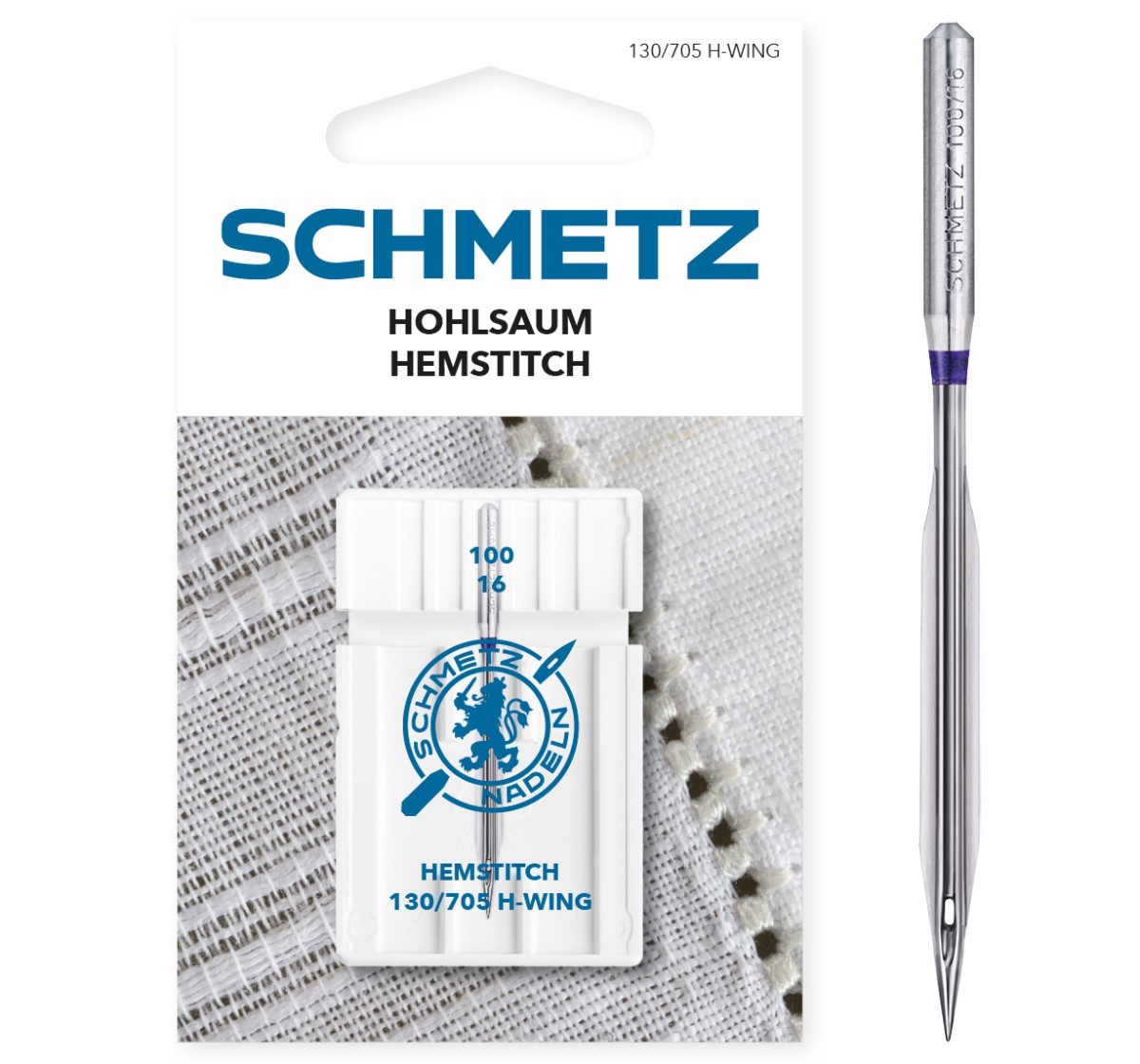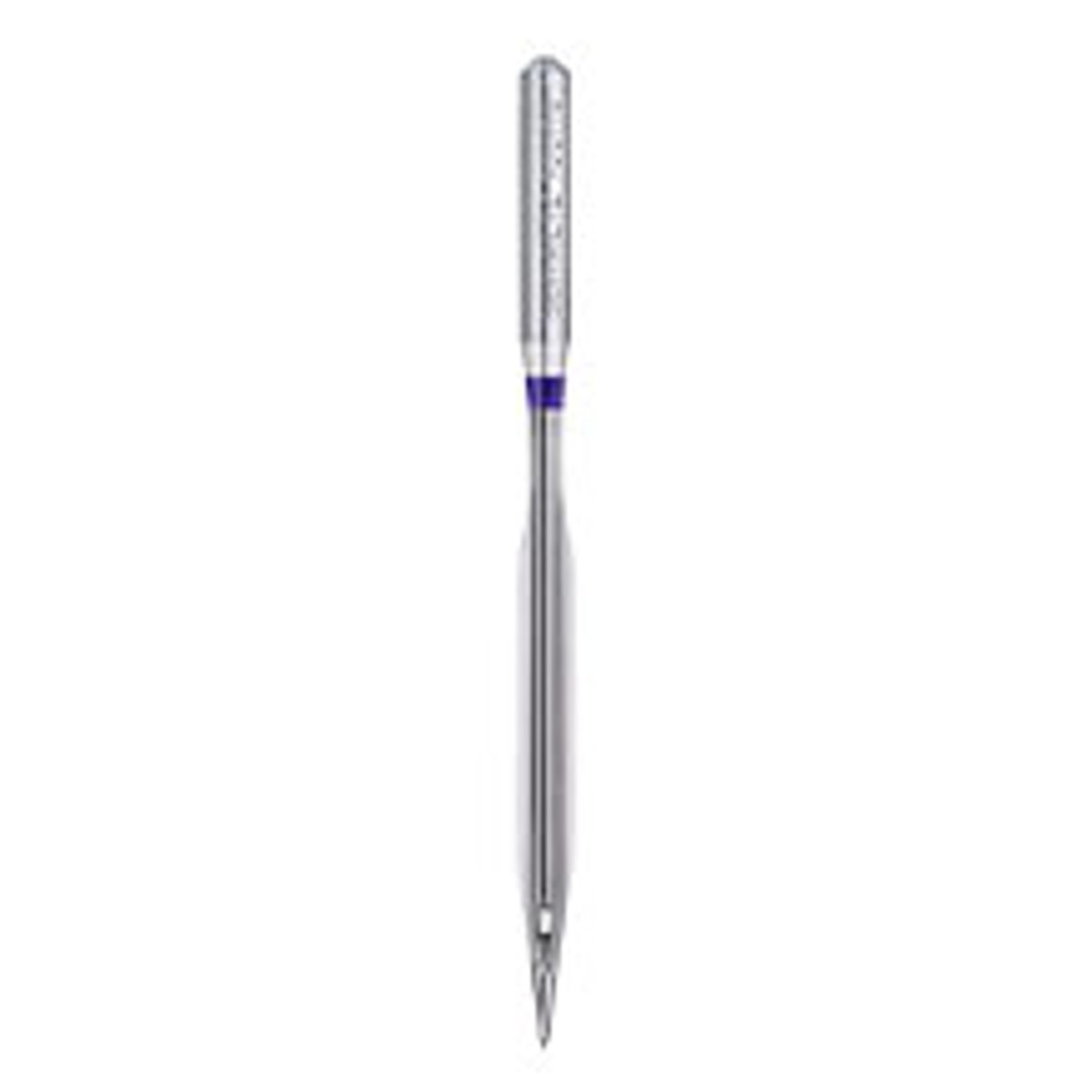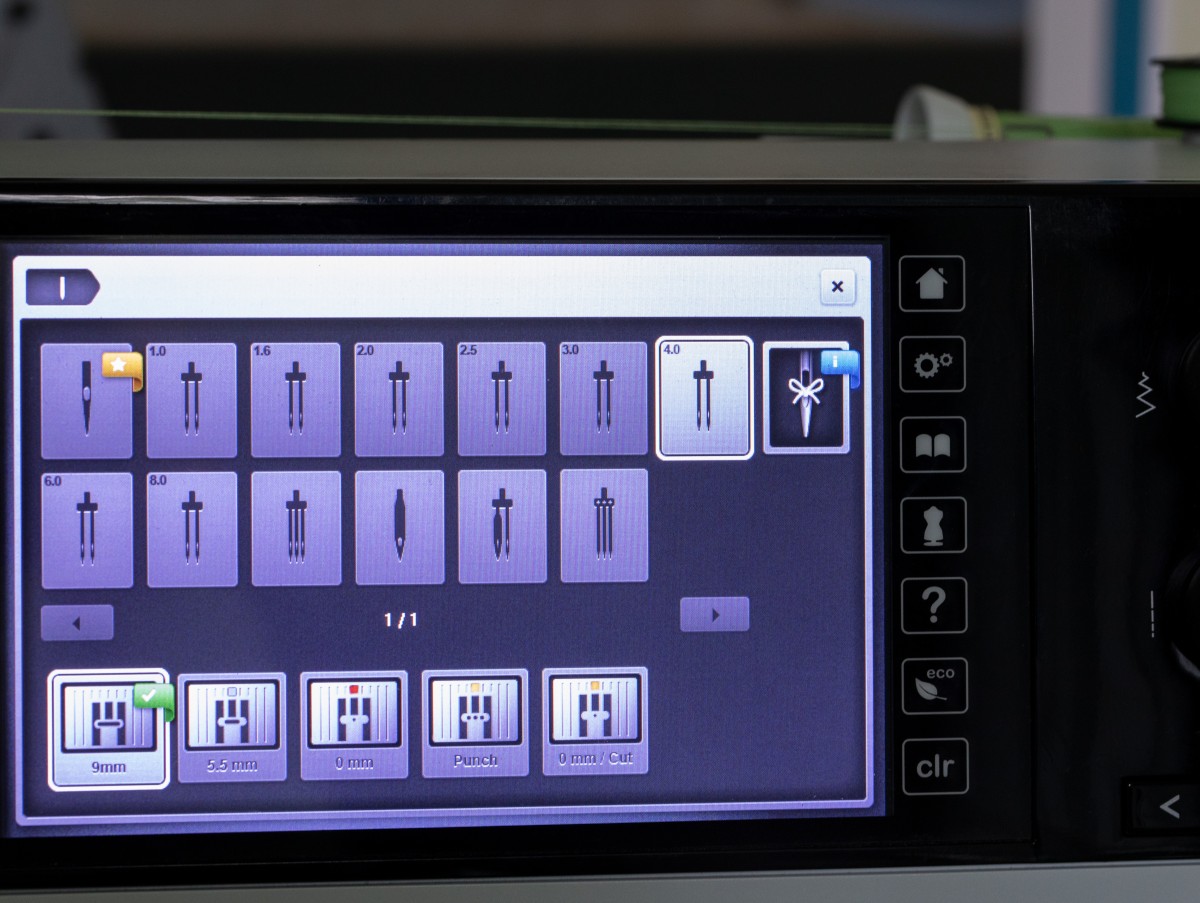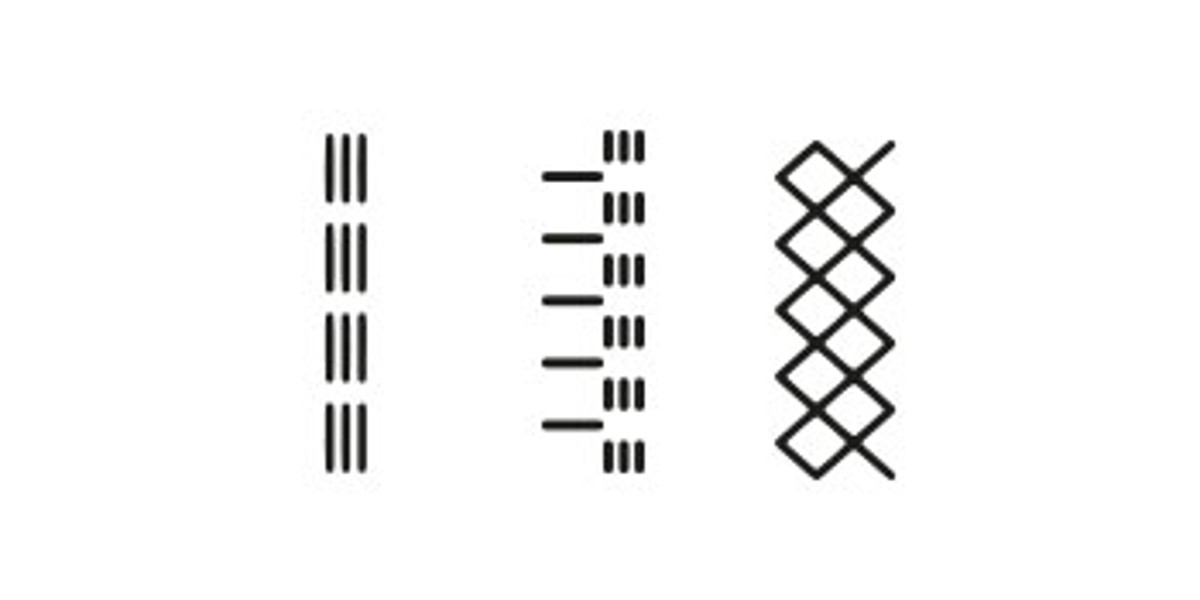


Hemstitch Needle
Needle system
130/705 H-WING
Tips
- Give simple blouses a special effect along the buttonhole placket.
- Stitch particularly accented seams with 40 Wt. viscose (rayon) or multi-color threads.
- Create embroidery motifs on your embroidery machine.
- Conjure up decorative effects when attaching lace.
- Prevent seam puckering on soft/light fabrics by using spray starch or a non-permanent stabilizer such as tear-off embroidery backing or water-soluble or heat-sensitive embroidery film.
Suitable fabrics/materials:
The best effects are achieved in loosely woven fabrics, such as:
- Linen
- Batiste
- Cotton
- Flag cloth
Available needle sizes
NM 100, NM 120
Coating
Standard
Point shape
Special shape
Special features
Wing-like needle blade
Color marking
Just the needle size
Special effects with the Hemstitch Needle
The Hemstitch Needle, also known as a sword or wing needle, is used for decorative stitches, broderie anglaise and white embroidery in loosely woven fabrics such as linen. When sewing, holes are created in the seam, acting as a decorative element. Hemstitch seams can therefore be sewn easily with the sewing machine, even without having to remove the threads in the woven fabric beforehand like you do when sewing by hand. This traditional hemstitch effect is achieved by the “wings” on both sides of the needle's blade, which gently push the threads in the woven fabric to the side. The sewing thread supports this effect because it prevents the threads in the woven fabric from returning to their original position.
Before sewing
The Hemstitch Needle is threaded like any other needle. It should be noted that the automatic needle threader does not work with the Hemstitch Needle. The large stitch holes are more noticeable when the color of the sewing thread is matched to the fabric. When using a contrasting color, the sewing thread is the focus and not the holes.
Always use the Hemstitch Needle with a zigzag needle plate with an elongated stitch hole. Use a satin stitch or zigzag foot as the sewing foot. If available, use the button for the hemstitch or twin needle. Otherwise, reduce the stitch width so that the needle does not strike the sewing foot or the needle plate.
Avoid seam puckering on soft and light fabrics by using spray starch or a non-permanent stabilizer (such as tear-away non-woven backing, water-soluble or heat-soluble embroidery backing) in order to stabilize the fabric.
Stitch selection
For the best results with clearly visible holes, use a utility or decorative stitch where the needle pierces the same hole several times. These include, for example, the triple straight stitch, blanket stitch, star stitch or honeycomb stitch, which are available on many sewing machines. Often, these stitches are already marked as hemstitches in bold in the machine instructions or can be found in the machine’s heirloom menu. Experiment and see which stitches you like the best. Test this on some leftover fabric to determine the thread tension as well as a suitable stitch length and stitch width.
Tips:
- Add shine to the seam by using glossy embroidery threads.
- Sew with multi-colored threads for special effects.
- Add a personal touch to a simple blouse with a hemstitch seam along the button strip.
- Use the Hemstitch Needle on embroidery machines with embroidery files created specifically for this needle type.
- Use the decorative effect when sewing on lace.





